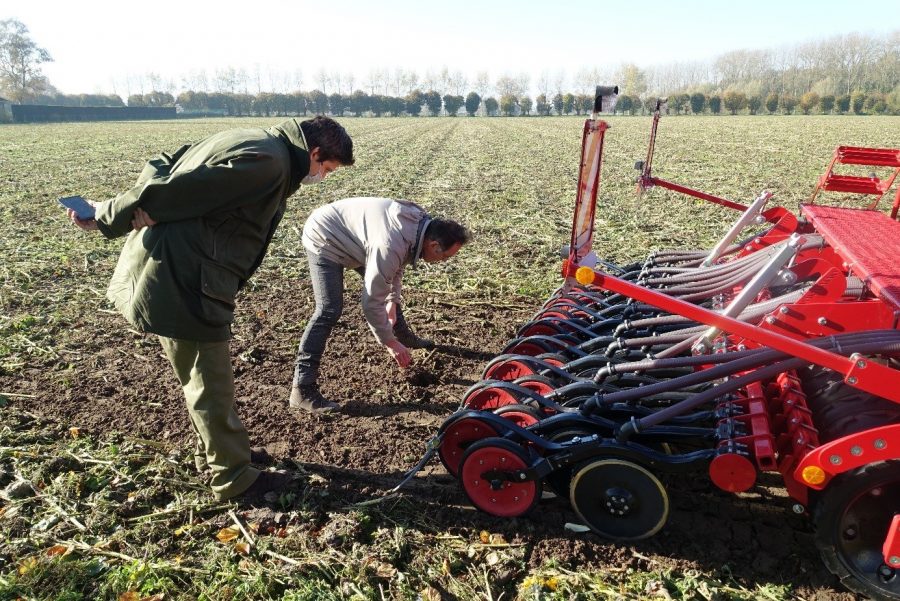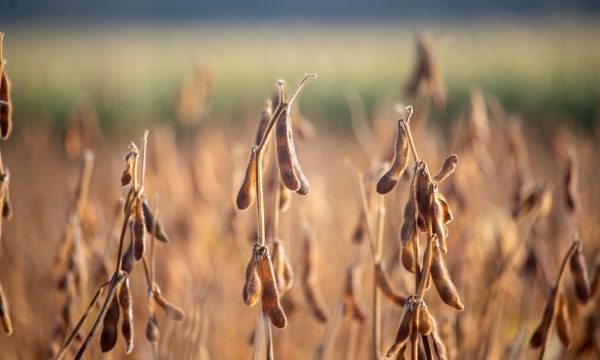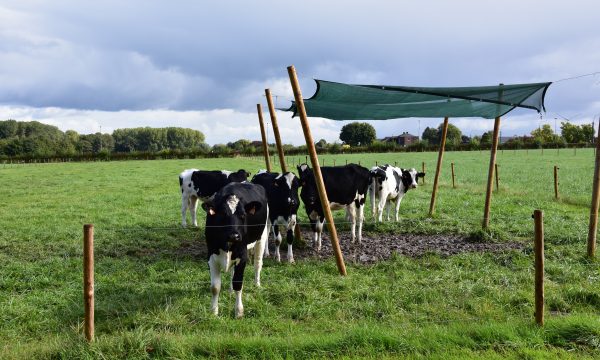Blog ILVO BLOGS from the Experimental Platform for Agroecology in Hansbeke: Sowing wheat with minimal tillage and no plowing

On November 6, 2020, organic baking wheat was sown on plots number 1 and 24 (3.6 hectares). After the October rain, seeding was waited until the condition of the field was dry.
Sowing is not done in the traditional way, but with a three-point seeder that disturbs the soil minimally, right through the mulch layer. Distributor Christiaens-Volcke from Avelgem used his Horsch Express 3TD to sow the baking wheat directly. The seeder sows wider (at 15 instead of 12.5 cm) so that it easily sows through the mulch layer and reduces disease pressure in the wheat. The integrated disc harrow and pressure roller take care of the seedbed preparation so that no tillage is needed beforehand. The superficial tillage leaves the soil previously rooted through by the green coverer intact as much as possible. The sowing was done in collaboration with ILVO and RHEA.
By working the soil minimally, less CO2 is lost from the soil compared to deeper tillage. Also the soil life can develop optimally.
Opbrengst?
PHAE (farmer Felix) targets yields of 3.5 and 5 tons and does not apply pesticides. ILVO monitors nitrogen availability in the spring, on the basis of which it can be decided whether or not to fertilize.
The Experimental Platform for Agroecology in Hansbeke is a collaboration between ILVO, PHAE and RHEA. The 50 ha of organic land offer a unique experimentation space for agroecological principles. We regularly blog about these experiments via the ILVO website and social media.


